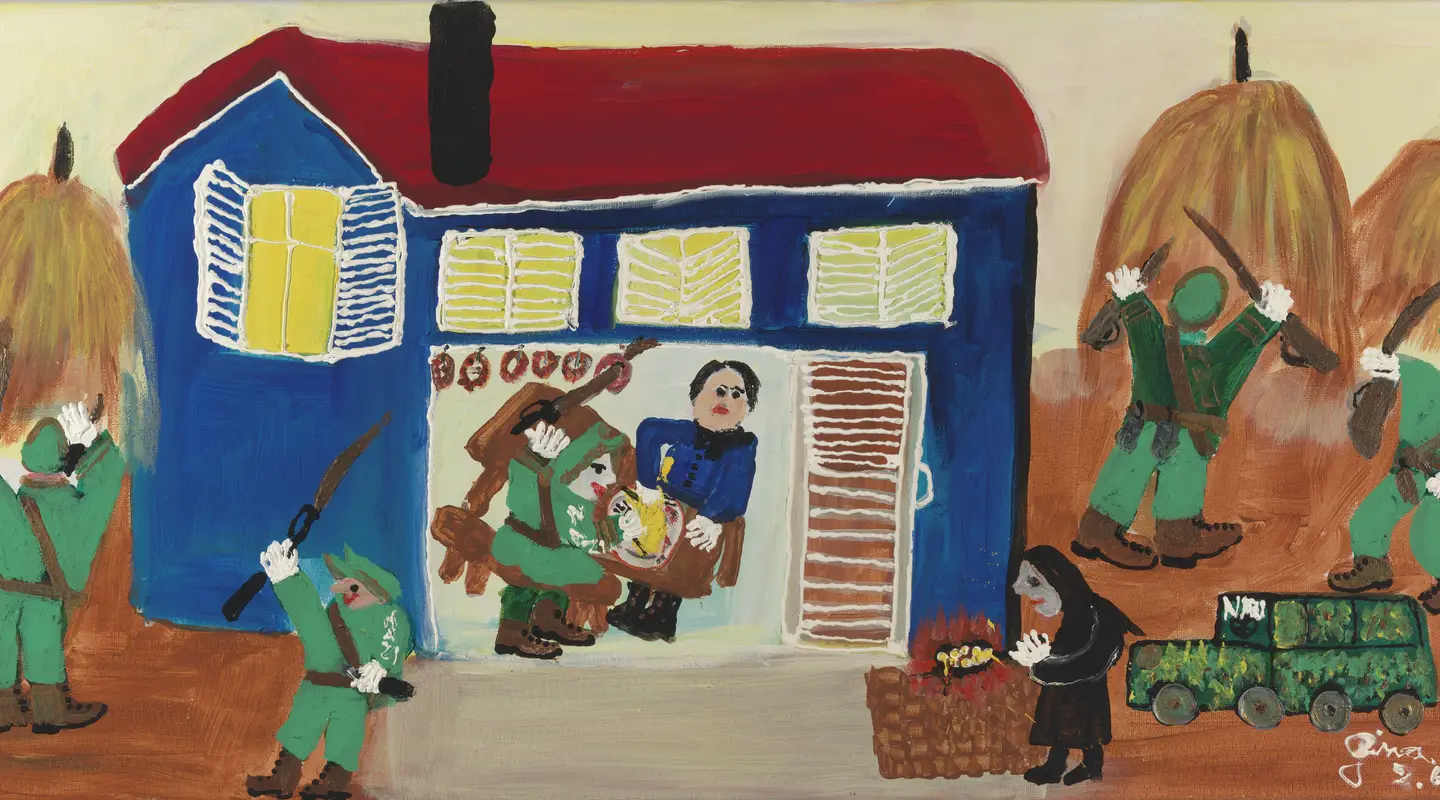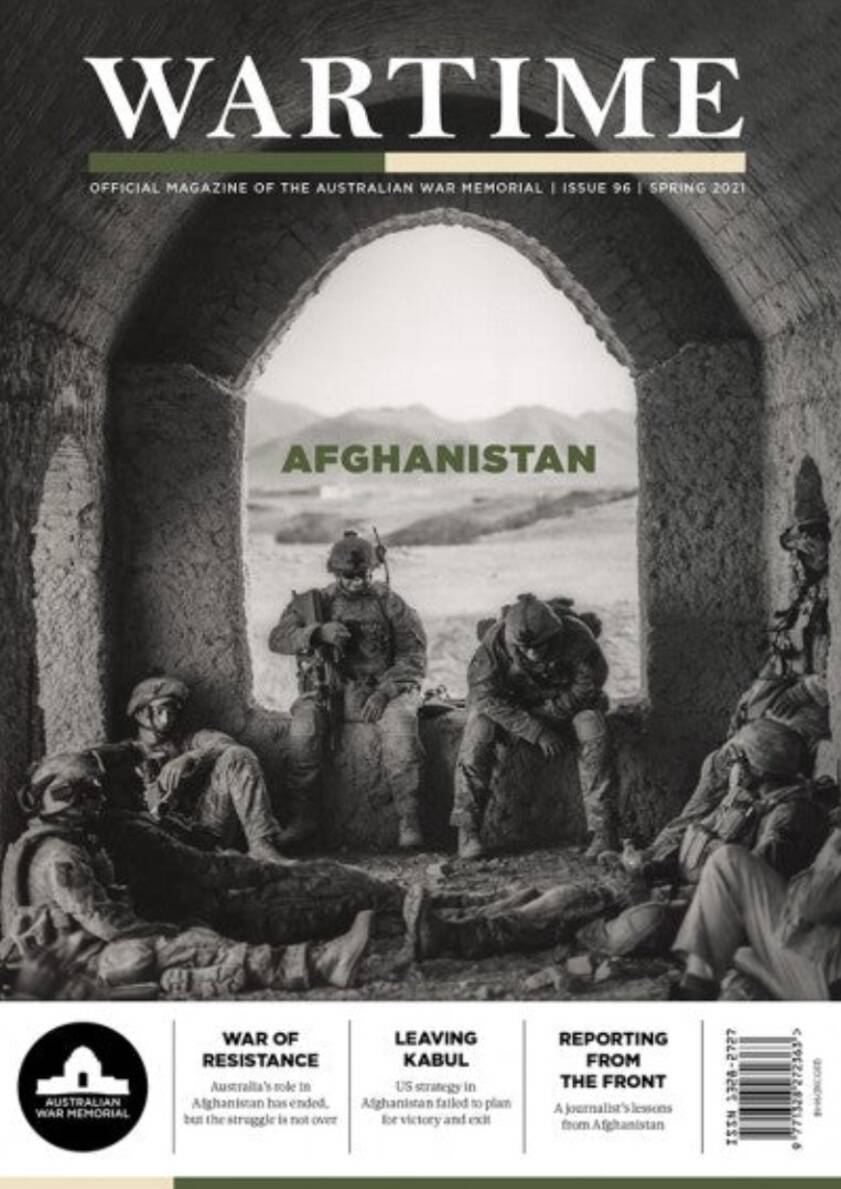When Gina Sinozich began painting in her 70's, she left a record of her wartime story.
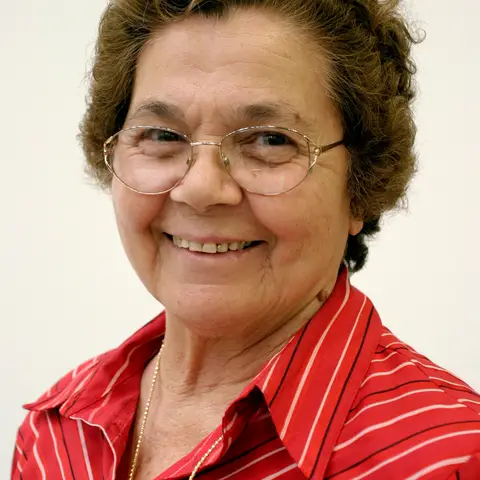
Artist, Gina Sinozich. Courtesy of Australian National Maritime Museum
Gina Sinozich took up painting late in life, documenting her family’s story.
In 2020, the Memorial acquired 21 of her works.
Painted in a naïve style and influenced by European folk art, they provide valuable interpretations of stories of survival, hardship and resistance during the Second World War.
On 6 April 1941, when Gina was 11, Nazi Germany invaded Yugoslavia and overwhelmed its army, which surrendered unconditionally. Axis countries took control but were met with fierce resistance from partisan forces.
Gina’s five elder brothers either fought with partisans or were forcibly recruited into Axis forces. One brother, Toni, was taken into the Italian army; after capture by the British in Libya, he spent time in a prisoner-of-war camp in Western Australia.
Gina’s mother was a partizanka (a female partisan) who carried supplies to partisan forces camped in the mountains, at one time walking 400 km to deliver food and clothing to her partisan son, Riko.
Gina’s husband, Eugene, enlisted with partisans when he was 18; captured by the Germans, he was spared execution and taken into slave labour. He was transported to the Eastern Front and witnessed the siege of Stalingrad.
After the war, Gina, Eugene and their two eldest children escaped communist dictatorship and emigrated to Australia, where they raised their family. Gina died in 2020.
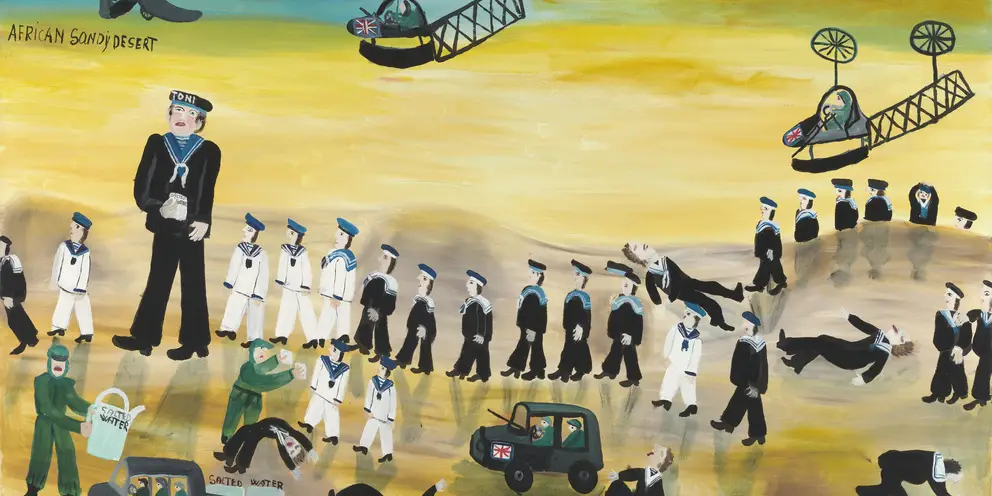
Gina Sinozich, Toni in the African Sandy Desert after capture by the British, 2004
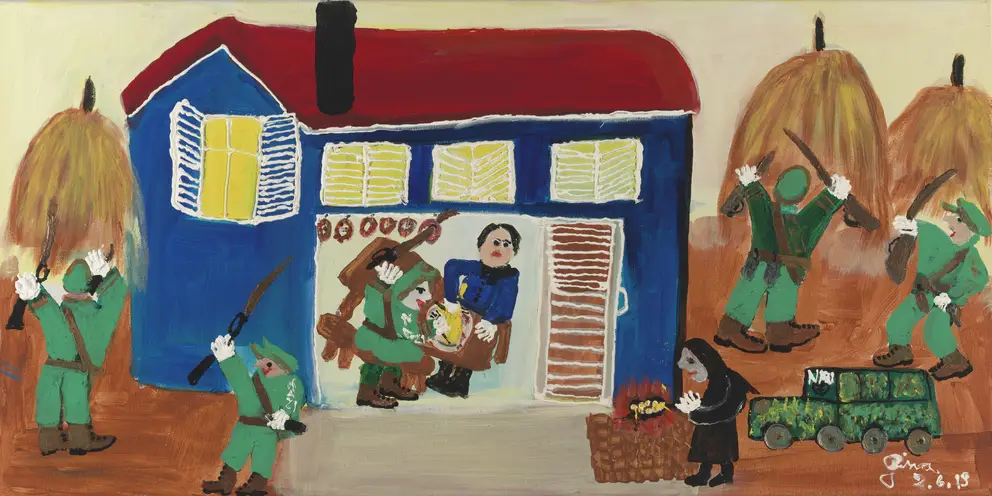
Gina Sinozich, Peppi and Nazi soldier sharing a meal, 2019
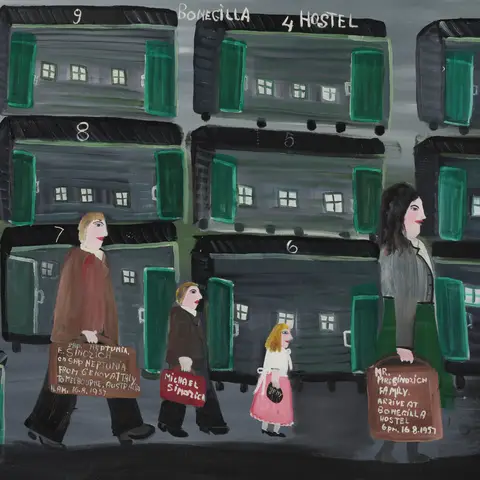
Gina Sinozich, Arrival at Bonegilla migrant camp, Victoria, 2006
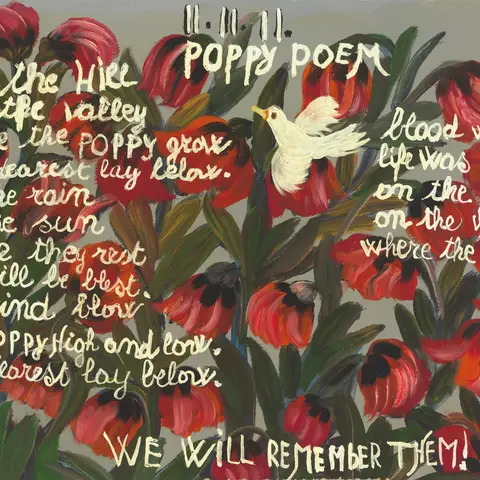
Gina Sinozich, Poppy poem, 2008
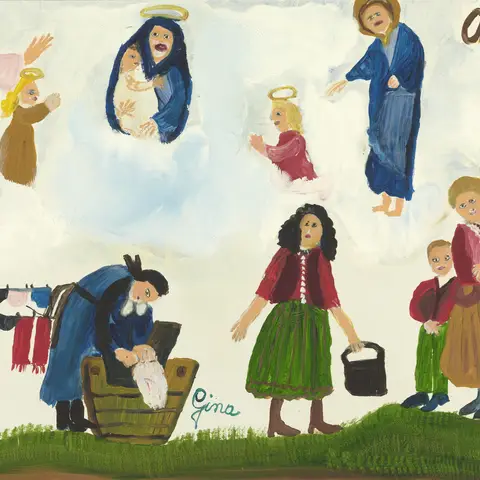
Gina Sinozich, Routine chores in Susnjevica, 2004
